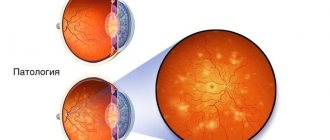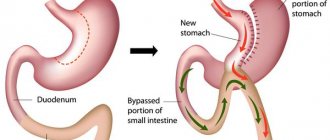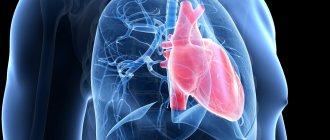The decompensated stage of a chronic disease is considered final. The body's compensatory mechanism is capable of coping with simple functional disorders; a moderately severe condition is compensated with side effects. Decompensation means a complete lack of reserves to compensate for the harm caused by the disease. Without radical medical intervention, the prognosis is extremely unfavorable.
Decompensated diabetes mellitus: what is it? This is the last of the three stages of the disease, in which blood glucose levels fail to stabilize. A worn-out body is not able to counteract pathology even under insulin influence. In this condition, complications develop. In the absence of emergency assistance, the potential end of the decompensated stage of diabetes is death.
Stages of the disease preceding decompensation
Before diabetes mellitus passes into the final (third) stage, the disease goes through two stages of development, determined by the severity of the disease:
- Subcompensated stage. Characterized by the patient's unstable condition. The body is working at its limit. When taking medications, it is not possible to change the sugar level to optimal levels or for a long time. Treatment tactics need urgent correction, otherwise the transition of diabetes mellitus to the stage of decompensation is inevitable.
- Compensated stage. The primary stage of the development of the disease, at which sugar levels can be normalized by taking medications. In this case, the compensatory mechanism is in working condition. The risk of complications is low.
This classification of the course of the disease is characteristic not only of diabetes mellitus. Thus, the patient’s condition is assessed for all incurable pathologies.
Symptoms
Pathology exhibits quite a lot of symptoms. There are no specific signs by which the disease can be accurately diagnosed.
Decompensated heart failure is a consequence of other heart diseases, so the clinical picture is quite varied, as some symptoms overlap with others.
The main symptoms of decompensated heart failure:
- Dyspnea. It manifests itself under light loads, but if there is no appropriate treatment, the pathology progresses and is disturbing, even if the person is in a calm state. This occurs due to congestion in the lungs.
- Swelling of the legs and arms. They are explained by impaired outflow of fluid from the body. In this case, the heart muscle is also affected.
- Dry cough.
- Pain or discomfort in the right hypochondrium.
- Ascites is dropsy in the abdominal cavity. At the same time, the stomach and weight of a person increase significantly.
- General weakness, feeling of overwork.
- Cold feet and hands.
- Small amount of urine, rare urge to urinate.
During examination, doctors detect wheezing in the lungs, arrhythmia, and congestive processes. There is an increase in pressure in the jugular vein.
Causes
A decompensated form of the disease can develop due to the fault of the patient himself, due to the incompetence of the attending endocrinologist, or due to external influences. The first category includes the following reasons: neglect of the dietary diet and non-compliance with doctor’s recommendations, self-medication with folk remedies and biological supplements, ignoring prescribed therapy, refusal to use hormonal treatment with insulin (if it is vitally necessary).
Errors in nutrition are one of the main reasons for the transition of diabetes to the stage of decompensation
Medical errors include: incorrectly selected dose of a hormone (insulin), lack of control over the dynamics of therapy. External influences include sudden stressful situations, unfavorable epidemiological conditions, and infectious viral diseases suffered as a result. Detoxification during infection or poisoning is especially dangerous for a diabetic. This condition can cause dehydration (dehydration of the body).
It is important to know
To understand the general meaning, it is worth considering the mechanism of decompensation itself. When there is some kind of malfunction in the body, the organ or system “works for two”, adapting to these changed conditions. This is called the compensation process. However, it cannot be “free”. In medicine, such a “payment” is clearly visible: for example, hypertrophy of the heart muscle develops.
But in terms of the patient’s mental life, compensation may not be so noticeable. Unsociability and a tendency toward loneliness, for example, are not always compensatory characteristics, but can act as a personality trait. Therefore, it is difficult to accurately indicate the developed compensatory mechanisms.
After some time, additional harmful factors lead to the system ceasing to function. This is decompensation.
If we consider this from a mental point of view, then a patient with partially preserved critical thinking in some way “adjusts” to the situation or the person is in a state of remission; and a client with psychological problems solves them through “additional” methods of unloading: alcohol, finding a “scapegoat”, etc. However, there comes a time when, under the influence of additional factors (new information, changes in the situation, time of year and a number of seemingly insignificant changes), a “breakdown” occurs, which is characterized by a sharp exacerbation of mental or psychopathic symptoms. Patients with schizophrenia, for example, experience bouts of delusions and hallucinations. Depression manifests itself in suicide attempts. With post-traumatic syndrome, a person may break into hysterics or uncontrollable motor activity.
However, rarely does such deterioration occur overnight. As a rule, it occurs through a stage of subcompensation, during which clinical symptoms gradually increase. The state of health changes, the person himself feels it and begins to understand: “something wrong” is happening. It is after subcompensation that the patient enters the stage of decompensation.
Comparative indicators of diabetes by disease stage
To determine the stage of the disease, indicators from various studies are compared with standards. This helps control the course of the disease. In cases of decompensated diabetes mellitus, the indicators are always high.
Double blood test to determine sugar levels
Determining blood sugar levels is carried out in two stages:
- the usual fasting test;
- glucose load test (blood test two hours after the patient eats or drinks sweet water).
| Indicators | Fasting sugar (mmol/l) | Glucose loading test (mmol/l) |
| Compensation | 4,4–6,1 | 5,5–8 |
| Subcompensation | 6,2–7,7 | 8,1–10 |
| Decompensation | >7,7 | >10 |
Blood for glycosylated (glycated) hemoglobin
A protein found in red blood cells (erythrocytes), or glycosylated hemoglobin, is referred to in medical tests as HbA1C. Formed by inhibition of hemoglobin and glucose. The analysis data records the percentage of substances (the condition is assessed for three months).
If the rate is more than 10%, diabetes with irreversible consequences is diagnosed
Urine test to determine sugar levels
Glycosuria or the level of glucose in the urine in the absence of diabetes and in the compensated stage is zero, the permissible threshold is 0.06–0.083 mmol/l. In the subcompensation stage, the upper limit should not exceed 0.5 mmol/l. A higher rate is defined as decompensated diabetes.
Blood test for triglyceride and cholesterol levels
These indicators are used to assess the risk of developing cardiovascular diseases (including heart attack and stroke).
Men always have higher triglyceride levels than women
Determination of BMI (BMI)
Obesity is an invariable companion of diabetes mellitus. BMI (body mass index) is calculated using a standard formula.
In type 2 diabetes, obesity can be both a cause and a complication of the disease.
Arterial pressure
Diabetics typically have arterial hypertension. Acceptable indicators: with compensation and subcompensation do not exceed 140/90 and 160/100, respectively. Decompensation is characterized by higher digital values. Diagnosed decompensation of diabetes mellitus requires immediate intervention in the treatment process. To save the patient, it is necessary to change the treatment tactics of both the underlying disease and associated complications.
Treatment
Before prescribing a treatment method and specific medications, the doctor conducts a full examination. This includes studying the medical history, since if the last stage of the disease has developed, then the person already has a medical history. A physical examination is also performed.
The patient must undergo blood and urine tests. Instrumental studies include x-ray and echocardiography. Modern diagnostic methods include MRI and CT. They are very informative and can be prescribed instead of x-rays and ultrasound. After the necessary studies, medications are prescribed.
Treatment should be aimed at eliminating decompensation of the body and restoring its basic functions, neutralizing stagnant processes. Therapy must be carried out under the supervision of doctors, that is, only in a hospital setting. The patient needs bed rest; any stress (physical and emotional) must be excluded. The patient should periodically sit down or take a few steps. This will help prevent stagnation and the formation of blood clots.
Drug therapy
Decompensated heart failure is treated with a complex of various drugs. It is important to take:
- ACE inhibitors.
- Beta inhibitors. These drugs help reduce myocardial demand.
- Cardiac glycosides. These drugs help increase cardiac output.
- Aldosterone antagonists. These drugs increase blood pressure and remove excess fluid from the body.
- Antiarrhythmic drugs.
It is important to take antihypertensive drugs, drugs that affect the rheological quality of blood and lipid metabolism. Additionally, diuretics are required.
For advanced heart failure, other medications are also prescribed. Since the whole body suffers from cardiac dysfunction, it is necessary to take hepatoprotectors, immunomodulators and vitamin complexes.
It is important that a complex of drugs is prescribed by a qualified specialist, because all heart medications have a fairly large list of side effects. Only a doctor can prescribe therapy based on all the individual characteristics of the patient’s body in order to reduce the likelihood of such actions affecting the body.
Complications of the last stage
According to the severity and speed of development, complications are classified as acute and chronic. The last type of complications in the decompensated stage is almost always present. These include:
Leg pain due to diabetes
- Atherosclerotic damage to blood vessels by cholesterol growths. Develops as a result of metabolic disorders (in particular, protein and fat). Subsequently provokes hypertension, coronary artery disease (CHD), heart attacks, strokes, and heart failure.
- Diabetic polyneuropathy of the lower extremities (DPN). It is characterized by the death of nerve and muscle fibers due to the effect of glucose on small vessels (microangiopathy) and large arteries (macroangiopathy). With decompensation, diabetic foot syndrome develops. The end result is tissue necrosis and gangrene.
- Diabetic nephropathy. Pathological transformation of vascular tissue of the kidneys into connective tissue. With this complication, kidney filtration decreases. As a result, kidney failure develops.
- Dermatoses. Due to metabolic and blood circulation disorders, the skin does not receive sufficient nutrition. Any infection causes erosions and ulcers on the epidermis. The healing process is extremely complex and lengthy.
- Non-inflammatory damage to the retina (retinopathy). Occurs against the background of vascular disorders. May lead to complete blindness.
- Osteoporosis and diabetic osteoarthropathy. Thinning of bone tissue and joint deformation due to lack of nutrients.
- Psychopathological and neuropsychological abnormalities. They appear as a consequence of depression, increased nervousness and irritability, often characteristic of diabetics.
- Diabetic hepatopathy. Obesity and compaction of liver tissue due to failure of the processes of processing and metabolism of nutrients (proteins, fats, carbohydrates). The final stage is fatty hepatosis and liver failure.
The only way to prevent the spread of gangrene is surgery to amputate the foot.
Acute conditions
If acute complications occur, the patient needs emergency medical care. Otherwise, the possibility of death cannot be ruled out.
- Diabetic crisis. This diagnosis can have two polar manifestations: hypoglycemia (rapid drop in glucose levels) and hyperglycemia (forced jump in sugar due to acute insulin deficiency). If not treated promptly, both conditions can lead to diabetic coma.
- Diabetic ketoacidosis (DKA). A condition in which the level of ketone (acetone) bodies in the blood sharply increases. Develops against the background of stable hyperglycemia (increased blood glucose levels), metabolic disorders, and acetonemia (ketonemia). It is characterized by acute intoxication and, without medical intervention, threatens coma and death.
- Lactic acidosis. It occurs as a reaction to an excess of lactic acid. The complication is dangerous with the development of hyperlactic acidemic coma.
Important! Symptoms of acute complications tend to increase rapidly. In the absence of emergency assistance, death is possible within a few hours.
Types
In addition, the most important point is the type of personality that shows signs of such a disease as decompensation.
So the asthenic type will be easily exhausted under the influence of irritants. Stenic – a strong type, on the contrary, shows increased activity (including motor activity). A dysthenic person may, under different conditions, exhibit one or another way of reacting.
Psychopathy varies greatly in its manifestations. Therefore, the signs that decompensation manifests itself will be very diverse. Each case that is examined by a specialist will, however, have basic symptoms. With their help, you can identify a type of decompensation, which is called clinical. There are three main basic types:
- neurotic;
- affective;
- abnormally personal.
The neurotic type has the following manifestation scenarios:
With asthenia. There is increased fatigue, a feeling of lethargy, weakness, and problems concentrating. The patient experiences migraines, autonomic disorders in the form of increased sweating, incomprehensible heartbeat without physical activity. And also: indigestion, increased salivation, tearfulness. There is a sharp decrease in movements, up to the problem of getting out of bed and a sharpening of facial features.
With hypochodriac syndrome. A person develops a strong belief that he has a serious or even fatal illness. Because of this, all changes in well-being and any minor “manifestations of deterioration” of the condition are monitored. In addition, attempts are being made to manipulate others, citing this very “serious illness.”
With obsessive-phobic syndrome. Recurrent and haunting fears of the patient; depressing, overwhelming thoughts. This leads to painful control and checking of one’s actions. It is in this case that the connection with the event that caused decompensation is well monitored
A careless and discourteous remark made to a woman by her husband regarding the order in the house and a possible separation because of this, led to the manifestation of symptoms of such a disease as decompensation with a constant fixation on rubbing furniture, feeling the corners of the room for debris, etc.
The hysteroneurotic type manifests itself in the form of a demonstrative exaggeration of symptoms. You can observe vegetative-type disorders, as well as a tendency to demonstrative hysterics.
The affective type includes:
- affectively unstable mood swings, a variable pattern of manifestations of the disorder;
- exposive-dysphonic decrease in mood, which is expressed in wariness, anger, tension, isolation, wariness, conflict, aggression if a person is touched;
- subdepressive type with a long-term decrease in mood, lack of desire for anything, obvious and emphasized dissatisfaction with everything and everyone, anxiety. Sleep disturbance is often observed.
The anomalous personality type is characterized by increased severity of inappropriate behavioral forms. And it depends on the nature of the disease itself or psychological trauma.
If we consider illness not as a psychological and psychiatric problem, but take an example of a purely physiological illness, we can consider the stage of decompensation in the case of a patient experiencing his illness. After all, any serious illness can go through the following stages:
- The pre-medical phase is when symptoms appear and the question arises: “what to do?”
- A sharp change in lifestyle when the patient is in forced isolation. It is especially difficult if the patient becomes disabled.
- Active adaptation, when painful symptoms weaken, and life in a medical institution or under supervision is perceived adequately. However, if treatment is delayed or there is no improvement, the person can move to the next stage.
- Mental decompensation is characterized by disappointed hopes and the debunking of illusions. A person shows distrust and quarrels with doctors, changes them, conflicts with nursing staff, especially with those who behave rudely.
In this case, decompensation is a mental reaction to the disease, and is not itself a symptom of the disease.
Additionally
Decompensated diabetes is dangerous because of its unpredictability. The slightest provocation (diet violation, stress, lack of insulin) can lead to the death of the patient. In order not to bring the disease to its extreme stage, a diabetic must constantly monitor sugar levels and general well-being, visit an endocrinologist in a timely manner, not independently treat the disease using unconventional methods, without the prior approval of a doctor, and follow all recommendations on nutrition and the use of medications. You cannot get rid of diabetes; the patient must learn to coexist with the disease, protecting himself as much as possible from dangerous consequences.
Manifestations
The disease is heterogeneous in nature. It is often combined with other pathologies, which worsens the overall picture. There is no specific symptom that indicates this disease.
Decompensated heart failure has symptoms such as:
- Damage to the heart muscle.
- Difficulty breathing at rest and during exercise, regardless of the time of day.
- General weakness, which is associated with oxygen starvation of the body.
- Edema, resulting in increased body weight.
- Stagnation of fluid, manifested by a wet cough.
- Enlargement of the heart and increased frequency of its contractions. This is caused by the need to push out blood.
In the chronic form there are no obvious manifestations. They are identified gradually as the disease progresses. The clinical picture is based on stagnant processes in the body and insufficient blood supply.
Various symptoms indicate that fluid has begun to accumulate in tissues and organs:
- climbing stairs, lifting heavy objects is accompanied by shortness of breath;
- a constant cough appears;
- body weight increases for no reason;
- ankles swell.
Due to the fact that the body suffers from insufficient oxygen and nutrients, the patient:
- your vision becomes dark and your head feels dizzy;
- worries about weakness;
- contraction frequency increases;
- urination becomes more frequent at night;
- appetite worsens.
The deterioration of physical condition is accompanied by anxiety and depression.
In the acute form, a sharp development of symptoms is observed. If the right ventricle is affected, then:
- veins in the neck swell;
- fingers, legs, nose turn blue;
- limbs swell;
- An enlarged liver leads to yellowing of the skin.
In the case of left ventricular failure:
- respiratory function is impaired;
- bothered by attacks of sharp cough with sputum, and sometimes with foam;
- relief occurs in a sitting position;
- Auscultation reveals the presence of moist rales.
Clinical manifestations may differ among representatives of different sexes. Women suffer:
- burning pain in the heart area;
- sudden weight loss due to poor appetite;
- high blood pressure;
- swelling of the arms and legs.
In men there is:
- pressing chest pain, which often spreads to the left arm;
- wet cough with expectoration of blood;
- swelling of the limbs;
- redness of the skin on the chest;
- loss of consciousness.
In the chronic form, treatment is carried out throughout life. Acute cases require immediate medical attention.
Diagnostic examination
Laboratory tests, biopsy, ultrasound, and laparoscopic examination will help to assess the patient’s condition. Using ultrasound diagnostics, a specialist can pay attention to the increased size of the liver, as well as the presence of structural changes. The organ has a dense structure with nodules.
Laparoscopy allows you to determine the type and degree of pathology, as well as the general condition of the affected organ. Using a biopsy, you can learn about structural changes in the liver at the cellular level.
In a general blood test in cirrhosis, the erythrocyte sedimentation rate is increased, and hemoglobin levels are decreased. With microscopy of urinary sediment, a specialist will be able to see salts, as well as an increased level of red blood cells. In a biochemical study, the level of bilirubin, AST, and ALT will be increased. Laboratory tests will help make a diagnosis.
Questions and answers
Is it always necessary to admit a patient with an exacerbation of his mental state to the hospital?
Hospitalization is required if the doctor assesses the condition as serious, and the person’s behavior is aggressive and poses a threat to others. It is also necessary to place the patient in a hospital if the deviation is discovered for the first time. In this case, a selection of drugs with round-the-clock monitoring of their effect is required.
What to do if a person with a mental disorder refuses treatment?
You can call a doctor to your home so that he can assess the person’s condition and decide on further actions.
Good to know
VetConsult+, 2015. All rights reserved. The use of any materials posted on the site is permitted provided there is a link to the resource. When copying or partially using materials from the pages of the site, be sure to place a direct hyperlink open to search engines, located in the subtitle or in the first paragraph of the article.
DECOMPENSATION
, -i,
w.
Honey. Violation of compensation (2 digits).
Cardiac decompensation.
Source (printed version):
Dictionary of the Russian language: In 4 volumes / RAS, Institute of Linguistics.
research; Ed. A. P. Evgenieva. — 4th ed., erased. - M.: Rus. language; Polygraph resources, 1999; (electronic version):
Fundamental electronic library
Decompensation (from the Latin de... - a prefix denoting absence, and compensatio - balancing, compensation) is a disruption of the normal functioning of an individual organ, organ system or the entire organism, occurring as a result of exhaustion of capabilities or disruption of the adaptive mechanisms to pathological changes caused by a disease, for example , decompensation of the heart due to its defects.
Making the Word Map better together
Hello! My name is Lampobot, I am a computer program that helps you make Word Maps. I can count perfectly, but I still don’t understand very well how your world works. Help me figure it out!
I began to understand the world of emotions a little better.
Question: super speed
- is it something neutral, positive or negative?
Sentences containing "decompensation"
- Nutrition planning also has its own characteristics in a state of acute decompensation
of metabolic processes caused by high blood sugar. - Ketoacidosis occurs under the influence of provoking factors of decompensation
of diabetes mellitus. - The clinical course is characterized by its gradual onset, without signs of decompensation
. - (all offers)
Additionally
Expressions containing "decompensation":
Nutrition planning also has its own characteristics in a state of acute decompensation
metabolic processes caused by high blood sugar.
Ketoacidosis occurs under the influence of provoking factors of decompensation
diabetes mellitus
The clinical course is characterized by its gradual onset, without signs of decompensation
.
Diagnosis
Decompensated heart failure is a disease that requires urgent treatment. To determine the problem, they resort to instrumental diagnostic methods. The diagnosis is made after:
- Electrocardiography.
- X-ray examination of the chest.
- Determination of natriuretic and neutral peptide. These substances are responsible for regulating water-salt metabolism in the body. If the pressure in the left ventricle has increased and the myocardium is tense, their production increases. In cases of dysfunction of the cardiovascular system, the contractile activity of the myocardium is determined using peptides.
Diagnosis also includes a general blood and urine test. They check the content of glucose, urea and other substances. The condition of the thyroid gland and blood pressure levels are also assessed.
Sometimes they resort to transthoracic echocardiography. Using its results, the work of the left ventricle in systole and diastole, as well as the pressure in the vena cava, are determined.
Cardiac output is also determined. If decompensation of heart failure is confirmed, treatment is prescribed.









